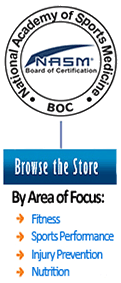Minimize Injury Potential – Maximize Performance!
When someone says that you have potential, they are really saying, “You could be great, but you aren’t right now.” Athletes typically don’t ever want to hear these words, especially goalies, but it is an opportunity to be coached and improve. Goalies are some of the most competitive people out there (I know from experience). We hate when we can’t perform at our best and stop every puck. Though usually thought of as a little weird, goalies should be the epitome of athleticism and intelligence. We need to know offensive and defensive strategies, as well as our own position. Then, we need to have the skill to turn that knowledge into a physical response, all while having a fraction of a second to react. Intelligence is developed through quality game experiences and exceptional goaltending coaches. Watching game film and skating daily will help to perfect the specific skill sets needed to play at a high level and athletic performance can be worked on while skating. Unfortunately, performance can also be hindered if your body is unable to move according to the specific demands of the position. Off ice training is a crucial aspect of success and should be a focus all year long.
When training off ice, there are three key components to bringing out the potential talent and maximizing performance. First, you must understand how a goalie moves. Then, you must learn how your body moves. Finally, you must learn how to train your body to move as a goalie should.
How A Goalie Moves
“Every movement a goalie makes involves a pivot [on your feet] or rotation [in your butterfly] to get to your angle and stay square to the puck. How fast you rotate is a skill. How accurate you are with your rotation is another skill.” – says former National Hockey League goalie coach Shane Clifford.
There’s plenty of buzz about healthy bacteria in some yogurts, supplements, and other foods. The stories range from study results to scam warnings. Here, two NASM experts clear up confusion and ofer a few surprising options of foods that contain probiotics. Spoiler: They’re definitely worth eating!
Having a healthy gut or gastrointestinal (GI) tract is largely a numbers game, says Dr. Geoff Lecovin, MS, DC, ND, L.Ac., CSCS, CISSN, NASM-CPT (CES, PES, FNS) and an NASM Master Instructor, who holds master’s degrees in nutrition, exercise science, and acupuncture. In the adult gut, there are 100 trillion live microbes, also called microbiota. These bacteria outnumber our own body cells 10 to 1, but thankfully not all of these microbes are pathogenic. Some are not only beneficial but essential. (1)
When it comes to these bacteria, “you’re basically trying to outnumber the bad guys with the good guys,” says Dr. Lecovin, owner of Northwest Integrative Medicine in Redmond, Wash. “Probiotics are live food ingredients that can alter this microbiota and confer health benefits,” he says. “They are symbiotic organisms that are there to live–and to help us live.” (1, 4)
Other probiotics-related numbers are also impressive. In 2015, probiotics made up $36.6 billion of the market in terms of ingredient sales, according to Global Market Insights, Inc. And this organization expects that figure to surpass $64 billion by 2023. (9) That’s probably not a bad thing: Research shows that people in Western countries have less diversity among bacteria in their GI tract than in previous years. Antibiotic overuse, excessive hygiene, smaller family sizes, and dietary changes (fewer whole foods, more simple carbs) are some of the things that have shielded Westerners from exposure to bacteria which, it turns out, is not entirely a good thing. (2, 4)




